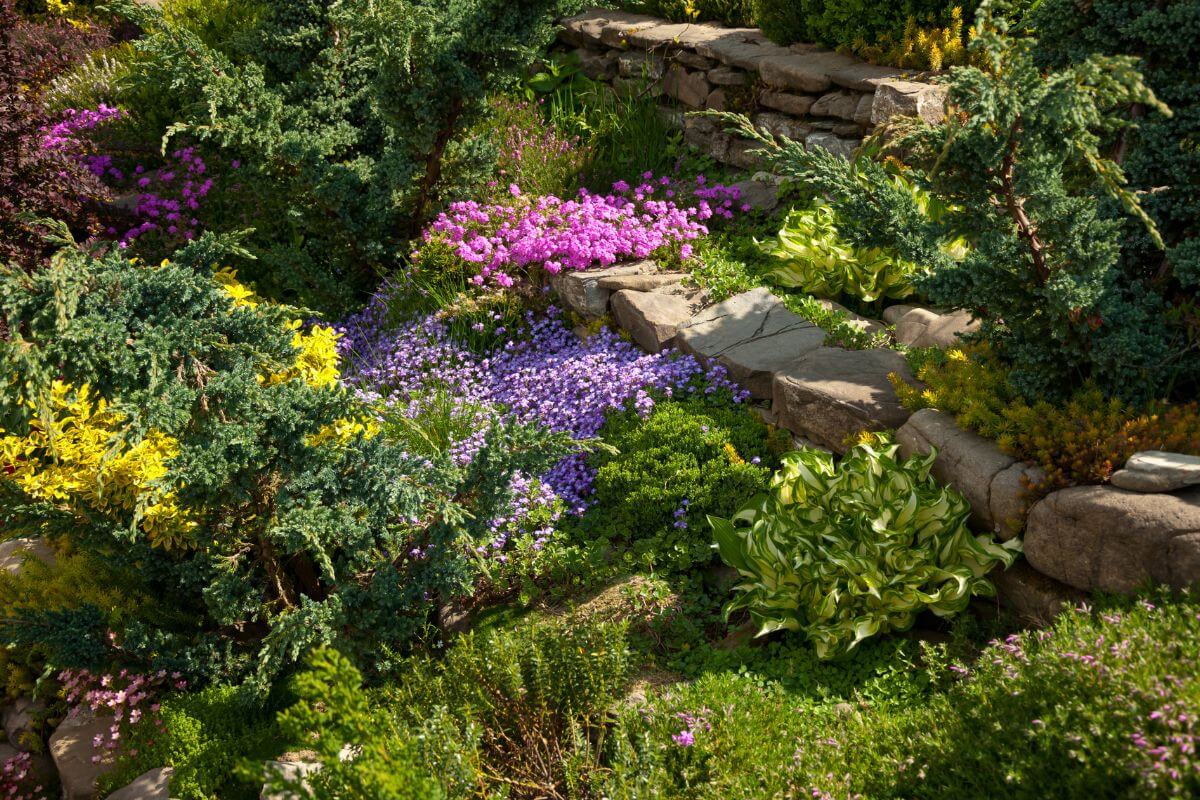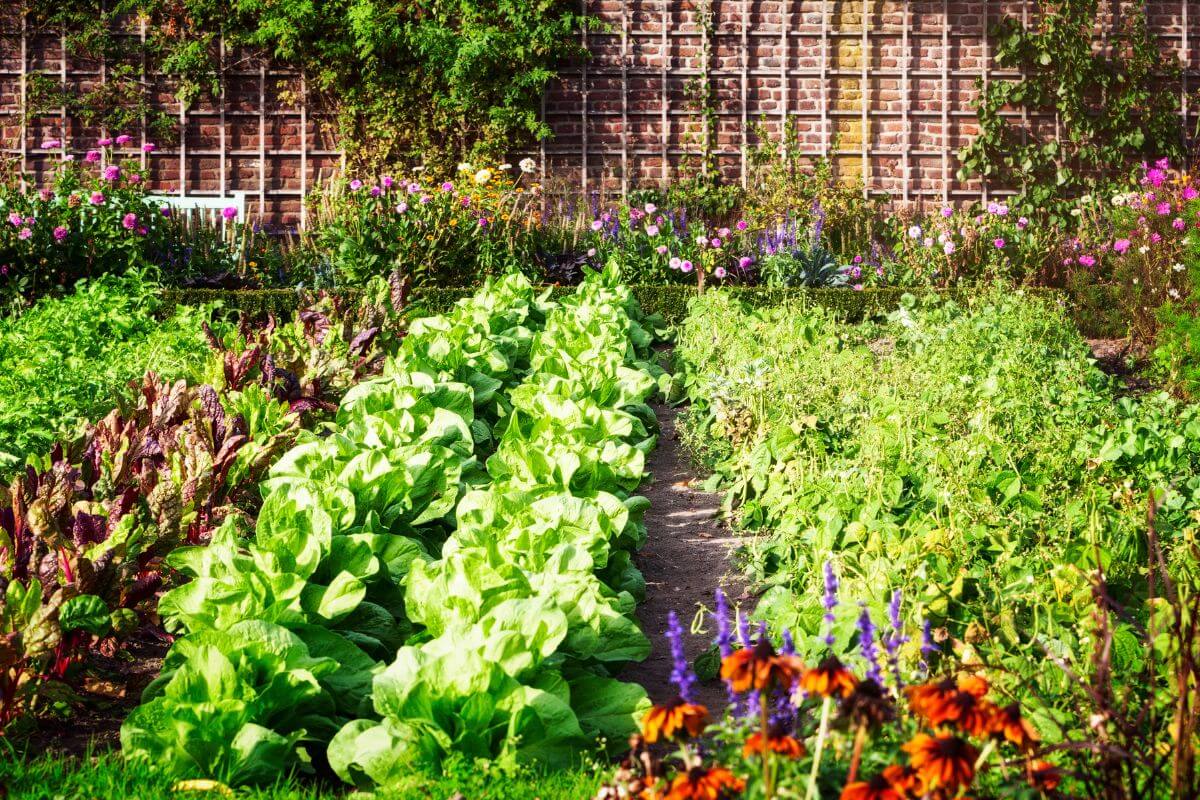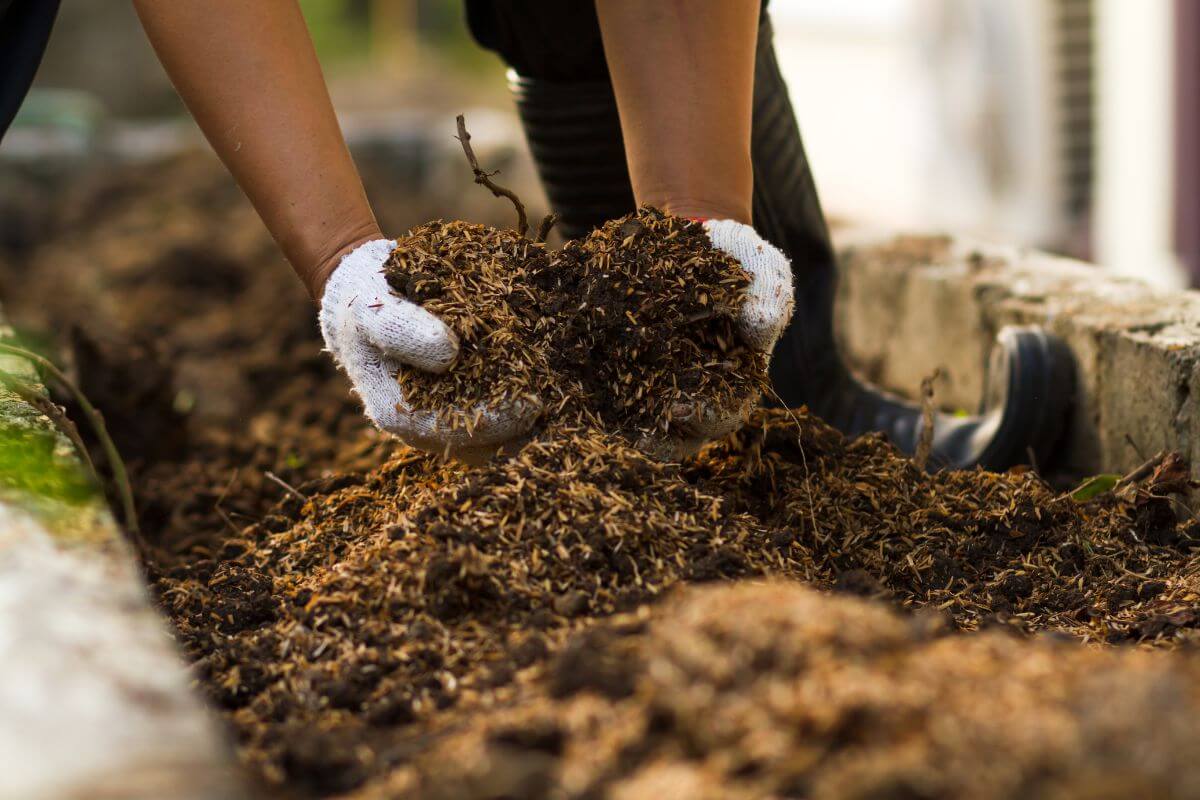Ever thought about transforming your outdoor space into a beautiful garden? Planning a garden might seem overwhelming, but it’s easier than you think with a clear plan. Let’s dive into the essentials of garden design to create your dream garden.
You’ll learn how to assess your space, choose a garden style, and pick the best plants and features. Whether you want a relaxing retreat or a lively play area, we’ll cover all the steps to make it happen. Plus, I’ll discuss budget-friendly tips and ways to maximize your garden’s potential.
Ready to get started? Stick around to discover how to plan a garden that suits your needs and brings your vision to life.
7 Key Takeaways on Planning Your Garden
- Assess your outdoor space’s sunlight, moisture, and adaptive strategies before planning your garden.
- Choose a garden style that aligns with your goals, budget, space, and sunlight availability.
- Select the best garden location considering sun exposure, soil quality, convenience, and protection from wind.
- Start with a manageable garden size and gradually expand as your gardening skills grow.
- Match your plant choices to your climate and soil type for optimal growth and yield.
- Use budget-friendly strategies like growing from seeds, repurposing items, and making your own compost.
- Set achievable goals and prepare your garden space before purchasing plants to ensure their survival and growth.
Steps to Plan and Design a Garden

Begin your garden plan by assessing your outdoor space: observe sunlight levels, and moisture conditions, and consider adaptive strategies like pots or raised beds. Define your garden’s purpose — whether for relaxation, play, entertainment, or wildlife — and tailor your design accordingly.
If you’re unsure how to proceed with the design, don’t worry — I’ll guide you through this structured list of steps to create a garden that meets your specific needs.
1. Choose Your Style of Garden

When you choose a garden style, think about your goals, budget, space, and sunlight. Some popular garden styles are:
- Cottage Garden – An informal garden with colorful flowers like roses, dianthus, and lilacs. You’ll also find herbs and vegetables. It feels romantic with soft colors and fragrant plants. Features include packed flower beds, curved paths, and old-fashioned items like wheelbarrows and statues.
- Traditional Garden – A formal garden with symmetry and geometric shapes. It often has many annual plants. These gardens are usually large and grand with estate-like features.
- Modern or Contemporary Garden – Clean and simple with natural materials like stone and wood. You might see a small greenhouse, stylish white furniture, and soft lighting to set the mood.
- Mediterranean Garden – Uses plants like lavender, rosemary, and sage that handle dry conditions well. It includes gravel paths, pergolas, and raised beds, giving it a warm, sunny feel.
- Japanese Garden – Designed for peace and harmony with nature. It has water features like ponds and bridges and carefully trimmed plants. It uses natural materials and simple designs.
- Wildlife Garden – Attracts useful insects, birds, and small animals with native plants. Features flowers like asters, coneflowers, and zinnias to help pollinators.
When picking a garden style, think about what matters most to you. Do you want to grow food, make it look nice, or have a place to relax? Also, consider how much time and money you can spend on care.
The size of your garden and how much sunlight it gets will help you choose the right plants and features.
2. Choose the Best Spot for Your Garden
To choose the best location for your garden, follow these simple steps:
- Check Sun Exposure – Most vegetables need 8-10 hours of direct sunlight each day. Find a sunny spot.
- Test the Soil – Make sure it is fertile, drains well, and is free of pollutants. Add compost to improve poor soil.
- Consider Convenience – Pick a spot close to your home for easy access. This makes caring for your garden simpler.
- Protect From Wind – Use fences, hedges, or structures to shield plants from strong winds that could harm them.
- Note Microclimates – Nearby objects like trees can create warmer or cooler spots. See how these affect your garden.
- Measure Space – Figure out how much room you have. A good starting garden size is 75-100 sq ft.
- Plan Paths – Include walkways for easy movement around your garden, reaching places like sheds or outdoor areas.
- Add Features – Decide where to put trees and other features to make your garden appealing.
You can choose the perfect place to grow your dream garden by considering these factors. The right spot ensures a great harvest.
3. Consider the Size of Your Garden
Choosing the right size garden layout involves key steps. Measure your available space, checking sunlight, soil quality, and access. A good starting size is a 75 to 100-square-foot garden, manageable for beginners.
Consider what you want to grow — vegetables, fruits, or beautiful flowers. This helps determine the ideal garden size. Larger gardens, 200 to 400 square feet, can fit more plant varieties.
For beginners, start with a simple garden plan. A 4×8-foot raised bed garden (32 square feet) is perfect for learning basics without feeling overwhelmed.
As you gain experience, gradually increase your garden size. Experienced gardeners often manage 500 to 1000 square feet, adapting as their skills grow.
Garden style affects size. Formal or square-foot gardens need less space, about 100 to 200 square feet. Cottage gardens may need 400 to 800 square feet.
Include pathways in your outdoor space. Add 2 to 3 feet wide walkways for easy access. This adds 20% to 30% to the total garden footprint.
Plan for plant growth in your garden layout. Give extra space for spreading plants like squash and melons. Tall plants like tomatoes and corn need room to grow upward.
4. Decide What Plants to Grow in Your Garden

Pick plants that fit your climate. Cool places are good for lettuce, spinach, and peas. Warm areas suit tomatoes, peppers, and eggplants. For a steady harvest, mix fast-growing radishes with slow-growing carrots and medium-speed beans.
If you have little space, choose compact plants. Many seed packs now offer varieties perfect for container plants and small garden plants. These are great for urban areas or tiny yards. You can also opt for open pollinated plants to save seeds for the next seasons.
Heavy soil works well for root veggies like beets and potatoes. Light soil is best for leafy greens and herbs. Always check seed packs for planting advice so you can pick the best options for your garden type.
These tips are useful for kitchen gardens, vegetable gardens, and annual gardens. Keep experimenting to see what grows best in your space!
5. Consider the Budget for Your Garden

Creating a garden on a budget is easier than you think. Here are some tips to get you started:
- Grow from Seeds – Seeds are cheaper than buying plants. For example, grow your own salad leaves to save money on supermarket salads. You can also use seed preservation methods to grow different plant varieties and cut costs at the same time.
- Reuse and Repurpose – Use old items from home. Old plastic containers can be seed trays. Egg cartons can chit potatoes. Old tights can be soft plant ties. Repurpose PVC pipes, fencing, and hoses for garden structures and irrigation.
- Make Your Own Compost – Improve soil quality for free by making your own compost. If you lack space, make leaf mold by collecting fallen leaves. Well-rotted leaves, known as “black gold,” can transform soil. Some councils offer discounted compost bins.
- Buy Bare-Root Plants – Purchase bare-root plants in the dormant season. They are cheaper than potted plants. You can save around 60% on trees, shrubs, and perennials. Plant them properly to help them establish.
- Split Perennials – Get more plants by dividing herbaceous perennials. Cut the rootball in half with a knife or spade before planting. This method also works for supermarket herbs.
- Talk to Other Gardeners – Many gardeners share cuttings or seeds for free. Local gardeners can give you tips on what grows well in your area.
- Forage for Seeds and Cuttings – Collect seeds and take cuttings from wild plants. Do not take whole plants and limit your collection in any one place.
- Look for Free Stuff Online – Websites often list free items. With creativity, you can find things that fit your garden design at no cost.
- Use Available Materials – Look around and use your imagination. Turn a bathroom sink into a planter or use a tire as a raised bed. There is plenty of inspiration online for using what you have.
By following these tips, you can create a beautiful garden without spending too much.
Planning a Garden Final Thoughts
Planning a garden is exciting. But don’t overdo it.
Think about your free time, budget, and space. Set goals you can achieve. Prepare your space before buying plants. Plants can die if left in pots too long.
With creativity and effort, you can design your own garden. You can make any space beautiful and functional. Enjoy gardening!
Planning a Garden FAQs
1. How Do I Determine the Appropriate Size for My Garden?
Choose plants that match your climate and soil conditions, and consider your available space, whether for vegetables, flowers, or herbs.
2. How Do I Choose the Right Garden Style for My Space?
Choose plants that match your climate and soil conditions. For cool climates, consider vegetables like lettuce, spinach, and peas, and flowers like pansies and snapdragons.
In warm climates, grow tomatoes, peppers, eggplants, and flowers such as marigolds, zinnias, and purple coneflowers.
3. What Factors Should I Consider When Choosing a Location for My Garden?
Look at sun exposure, soil quality, convenience to your home, protection from wind, and any microclimates created by nearby objects.

